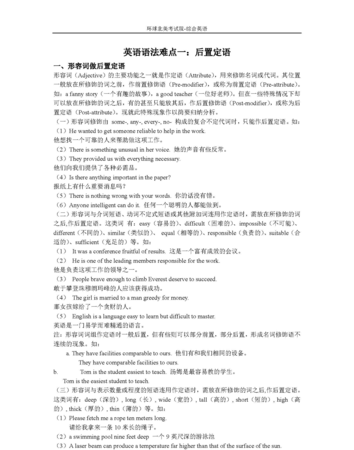英语中,动词的ing形式可作为后置定语,修饰名词,如“standing”在“The man standing over there is my brother.”中修饰“man”。此结构可表示进行中的动作、原因、时间、结果等,如“She is always talking about her problems.”。但需注意,后置定语应修饰名词,非句子或动词。这种语法结构常见,能使英语表达更准确、流畅。

例如,在句子“The man standing over there is my brother.”中,standing是后置定语,修饰man。这个后置定语告诉我们,这个人正在站立,帮助我们更好地理解这个人。
除了表示正在进行的动作,ing作后置定语还可以表示原因、时间、结果等等。例如:
- She is always talking about her problems. (她总是谈论她的问题。)
- The movie was really boring. (这部电影真的很无聊。)
- I was surprised to see him there. (我看到他在那里感到惊讶。)
ing作后置定语的用法非常广泛,但是需要注意的是,在使用ing作后置定语时,需要确保后置定语修饰的是名词,而不是句子或动词。例如:
- I saw him running to catch the bus. (我看到他跑去赶公交车。)
- Running to catch the bus, I saw him. (跑去赶公交车时,我看到了他。)
在第一个句子中,running修饰的是him。在第二个句子中,running修饰的是I,因此这个句子不符合规范。

